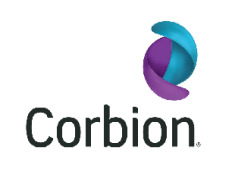News
Innovative solutions further the meat industry’s move toward greater transparency
5 Sep 2018Opinions may differ about exactly where and when the journey toward a “transparent” food industry began, but many food manufacturers would agree that the trip has felt like a long one. Some would trace it all the way back to the publication of Upton Sinclair’s “The Jungle” in 1906—perhaps the impetus for what eventually became the ever-evolving sustainability movement, which in turn fed consumer thoughtfulness, curiosity and concern about the foods they eat.

Initially recognized by food marketers as a consumer trend, the “clean-label” movement is—at this point—clearly not a trend, more likely representing an evolutionary shift in consumer awareness that may never turn back. Regardless of the movement’s origins, the meat industry—which has arguably grappled with the most passionate skeptics and dissenters in the overall food debate— has taken pains in recent years to remove barriers to the consumer’s view of meat processing, revealing a more secure, humane and sophisticated approach than many from outside the industry expected to see.
Opening a window
Long-time proponents of industry transparency, such as Dr. Temple Grandin and the North American Meat Institute, have given millions a window into the processing world using online video. These presentations have helped to demystify the processing plant and debunk many anti-meat myths. Cargill’s efforts to invite the world to look inside its beef processing business began even before the famous 2011 Oprah segment, which was shot in the company’s facility in Fort Morgan, Colo. All recognized that the industry had a positive story to tell and took the initiative to tell it.“The meat industry has learned a lot about how best to tell its own story,” says David Charest, Vice President-Meat Industry at Corbion. “Processors are more aware than ever of what many consumers care about and what they understand regarding regulations, ingredients and practices in the industry. They’ve come to grips with the fact that perceptions often win out over reality, even when it comes to food safety and quality.”
The ingredients of the story
Charest says his company, as an ingredient supplier to leading food manufacturers, has followed that lead, developing solutions for meat processors that address consumer concerns while delivering the effectiveness that is critical in plant operations and throughout the food value chain.“Corbion’s response to the move toward transparency has been to develop sustainable solutions that take nothing away from manufacturers while taking into account consumer perceptions and priorities,” Charest explains. “In fact, giving processors the functionality they need in a way that’s comfortable for consumers just gives the industry an even stronger story to tell.”
“Even in the case of non-labeled processing aids processors are realizing that it’s all part of their overarching story,” he adds. “They’re considering whether their food safety intervention methods can be explained simply so the general public can understand.”
The company’s lactic acid-based solution for surface decontamination and harvest intervention, PURAC® FCC Lactic Acid, is a good example. Lactic acid is naturally present in meat (as well as in the human body), and Corbion produces its product through a natural culturing or fermentation process using natural sugars from cane, beet, corn and cassava as feedstocks. This transparency-friendly solution sacrifices nothing in terms of reducing pathogens and spoilage bacteria on carcasses and fresh meat.
In a study at Oklahoma State University, Corbion’s Lactic Acid product outperformed a number of commercial intervention products—including a buffered sulphuric acid and peracetic acid (PAA) —in reducing E. coli 0157:H7 counts on beef carcasses. Another study at Texas Tech University showed that a 3% solution of Lactic Acid resulted in a 99.93% reduction in Salmonella on beef carcass samples in 24 hours.
The label as a storyteller
Manufacturers declare their position on consumer perceptions every day via the ingredient labels on their products. For many content-focused food shoppers today, the longer and harder to comprehend the ingredient list is, the stronger their impression that the maker doesn’t place high value on their desires and preferences. This truth is what drives the development of ingredient solutions that can effectively replace synthetic solutions on which the food industry, including meat processors, has traditionally depended. According to Charest, the Corbion portfolio includes many “clean-label” solutions based on naturally derived ingredients used for preservation, shelf-life extension, flavoring, acidification and fortifi cation. In addition to lactic acid, other ingredients in the portfolio can be declared as “natural aroma or flavor,” “fermented sugar” or “vinegar.”“That’s the language consumers speak and understand,” he says. “It tells a story that lets more people feel secure about the food they eat, and it’s part of a larger story that has the potential to change minds about a company and even the industry.”

